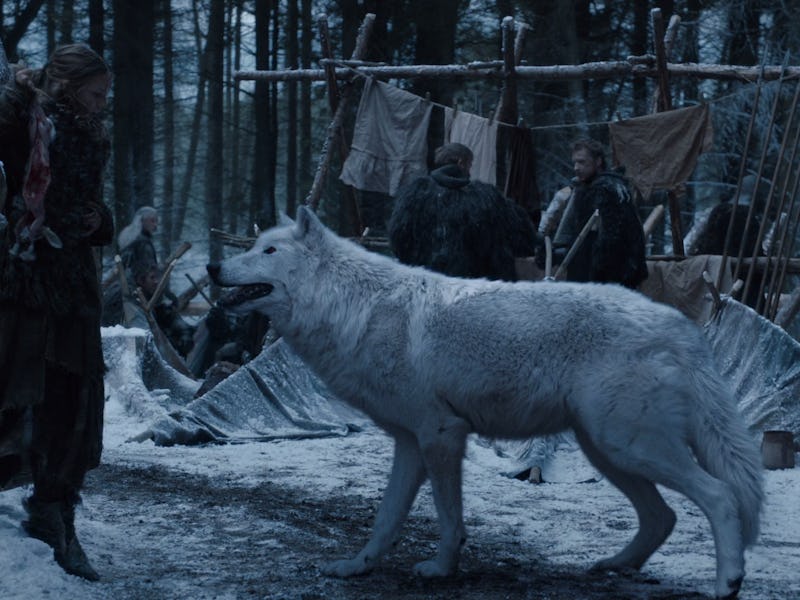
The existence of direwolves, the Stark family’s super-sized canine companions in Game of Thrones, isn’t confined to the mythical continent of Westeros. The majestic beasts stalked across the Americas, too, until they vanished roughly 10,000 years ago.
But de-extinction, a new technique that scientists have proposed as a way to bring back woolly mammoths, could be the tool we need to bring back direwolves before the Game of Thrones series finale.
Direwolves — known as Canis dirus, for “fearsome dog” — were carnivorous beasts that lived alongside mastodons and battled saber-toothed tigers during the Late Pleistocene Epoch, some 125,000–10,000 years ago. Weighing in at around 150 pounds, an adult direwolf was 25 percent larger than a modern wolf, thanks to broader bones and bigger muscles. Most impressive were its frightening teeth: In a 2005 article for the Journal of Zoology, paleontologist François Therrien estimated the direwolf’s bite would have been 129 percent more fierce than that of its contemporary cousin.
Near the end of the last Ice Age, dire wolves and many of their fearsome contemporaries went extinct in the Quaternary extinction event. All we’re left with now is the majestic but much smaller grey wolf, Canis lupus, and dozens of direwolf fossils in Los Angeles’s La Brea Tar Pits, where the skeletons of many ancient individuals were preserved.
With recent advances in “de-extinction” technology, however, there’s no guarantee that dire wolves will remain in those pits forever.
Just like cats and dogs! A direwolf and a saber-toothed tiger face off.
In February, the famed Harvard geneticist George Church, Ph.D., announced he had plans to create an elephant-mammoth hybrid and, in the process, partially revive the mammoth genome. “We’re not there yet,” he said at the time, “but it could happen in a couple of years.”
Right now, Church has access to the right tool: the gene-splicing device known as CRISPR. With it, he could, theoretically, insert DNA extracted from frozen mammoth carcasses into sex cells from a living Asian elephant. The process requires that both the extinct and living species share a significant amount of genetic code. If everything goes well, Church’s experiment could create a healthy hybrid — which would probably look like a furry Asian elephant with slightly smaller ears.
The same could theoretically be done to resurrect dire wolves. By extracting DNA from ancient skeletons, scientists could splice those genetic materials into cells from its closest living relative, the grey wolf. If dire wolves and grey wolves are as closely related as Asian elephants and mammoths, Operation Resurrect Lady (not a real thing, but it could be soon) might actually have legs. We could, in theory, have de-extinct dire wolves running around by the end of Season 6, given a grey wolf’s gestation period is about 69 days (nice).
Unfortunately, theory rarely matches up with reality. For all of the rigorous research that went into it, Church’s woolly mammoth plan is not going well.
A direwolf skeleton.
So far, his team has only been able to demonstrate its expertise at splicing genes, but they haven’t actually shown they can produce a healthy hybrid. Even if they figure it out, however, they’ll still run into strict opposition from people who question whether bringing the hybrid creature into the world would be safe or ethical.
The whole de-extinction thing is possible but remains dubious for now. Fortunately for die-hard Game of Thrones fans, dog breeders have launched the Dire Wolf Project, which breeds 130-pound American Alsatian pups that grow up to be beasts just as wild-looking as their mythical counterparts.
9-week-old American Alsatian puppies
See also: “Watch Game of Thrones Season 1-6 Condensed Into 5 Minutes”